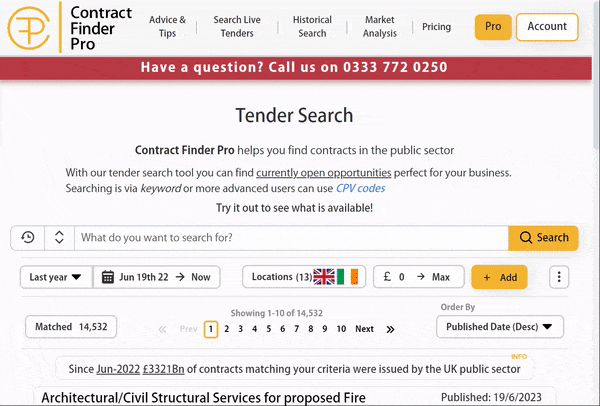Have a question? Call us on 0333 772 0250

How Public Sector Tendering Works
New to this whole tendering thing? Then you’re probably wondering what we mean when we talk about public sector tenders or government contracts.
Don’t worry, though. In this guide, we’ll lay out exactly what a public sector tender or government tender is, and how to bid on government contracts.


What is a Government Tender?
A tender is simply a notice of a project. This notice is an invitation for companies to bid on (or, in other words, offer their products and services for) said project.
Tenders are published by all kinds of government organisations that are looking for private-sector help for public-sector projects. These are called public sector tenders or government tenders.
The tender itself will include the following information:
Details of the project
Value of the tender (the total budget for the project)
How long the project will last
Details about the organisation posting the tender
Location of the project
Closing date for bids
Some tenders may also include details about their award criteria – how the organisation will choose which companies successfully receive the opportunity.
It’s also worth noting that public sector organisations will vary in how much detail they provide on tenders, so inevitably, some tenders will look different to others
The whole purpose of public sector tendering is to ensure that government projects are transparent. This means that tenders must be accessible (though, in reality, this is a little more tricky) and open to any qualified bidders
The Tendering Process in Public Sector Procurement
So, you’ve seen a tender that looks pretty interesting. It seems to fit what your company does, and you’d like to try bidding on the opportunity. What’s next?
Each supplier who is interested in the project must submit a bid. This document will contain a summary of your deliverables, a proposed project budget, and evidence that you’re the right supplier for the project. You can use evidence like case studies, testimonials, and statistics to convince the organisation to choose your company.
To write your bid, you’ll have to do a bit of research. Always start with the tender itself. Examine the document carefully and make sure you know exactly what the project entails. What are they actually asking of you? What stipulations are apparent? What specific requirements are there?
As well as knowing the ins and outs of the project, you also need to know who you're bidding to. Research the organisation, and don’t hesitate to contact the tender provider if you need more information about deliverables, expectations, or project timeframes.
Finally, show you’re providing value. Government bids are evaluated by looking for the MAT – the Most Advantageous Tender. (Previously, this was MEAT, the Most Economically Advantageous Tender, but government procurement guidelines have recently changed.) The organisation wants value for money, and you have to prove that you’ll give it to them.
Ready to take the next step and bid on a tender?
Want to get started in public sector tendering?
Contract Finder Pro offers all the tools you’ll need to start bidding successfully on projects
Search for relevant opportunities, research your competition, and learn about public sector organisations – all in one place.
Start your 14-day free trial today and see how easy it is to find government tenders and contracts with Contract Finder Pro

